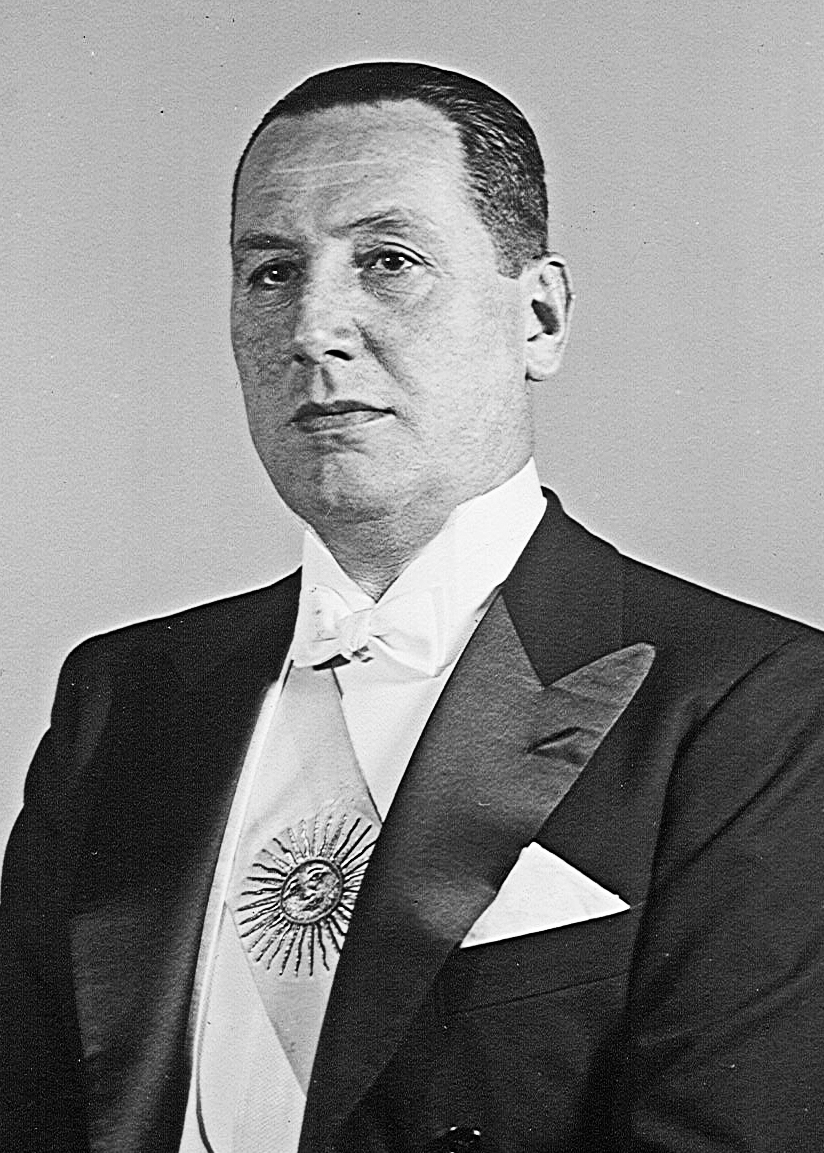In his first two years in office,
Perón nationalized the Central Bank and paid off its billion-dollar debt to the
Bank of England;
nationalized the railways (mostly owned by British and French companies), merchant marine, universities, public utilities, public transport (then, mostly tramways); and, probably most significantly, created a single purchaser for the nation's mostly export-oriented grains and oilseeds, the Institute for the Promotion of Trade (IAPI).
...
As Minister of Labour,
Perón established the INPS (the first national social insurance system in Argentina), settled industrial disputes in favour of labour unions (as long as their leaders pledged political allegiance to him), and introduced a wide range of social welfare benefits for unionised workers.
[13]
Employers were forced to improve working conditions and to provide severance pay and accident compensation, the conditions under which workers could be dismissed were restricted, a system of labour courts to handle the grievances of workers was established,
the working day was reduced in various industries, and paid holidays/vacations were generalised to the entire workforce. Perón also passed a law providing minimum wages, maximum hours and vacations for rural workers, froze rural rents, presided over a large increase in rural wages, and helped lumber, wine, sugar and migrant workers organize themselves.
...
When Perón became president on 4 June 1946, his two stated goals were
social justice and economic independence.
...
Economic success was short-lived. Following a lumbering recovery during 1933 to 1945, from 1946 to 1953 Argentina gained benefits from
Perón's five-year plan.
...
Perón's government is remembered for its record social investments. He introduced a Ministry of Health to the cabinet; its first head, the
neurologist Ramón Carrillo, oversaw the completion of over 4,200 health care facilities.
[38] Related works included construction of more than 1,000
kindergartens and over 8,000 schools, including several hundred technological, nursing and teachers' schools, among an array of other public investments.
[

en.wikipedia.org


